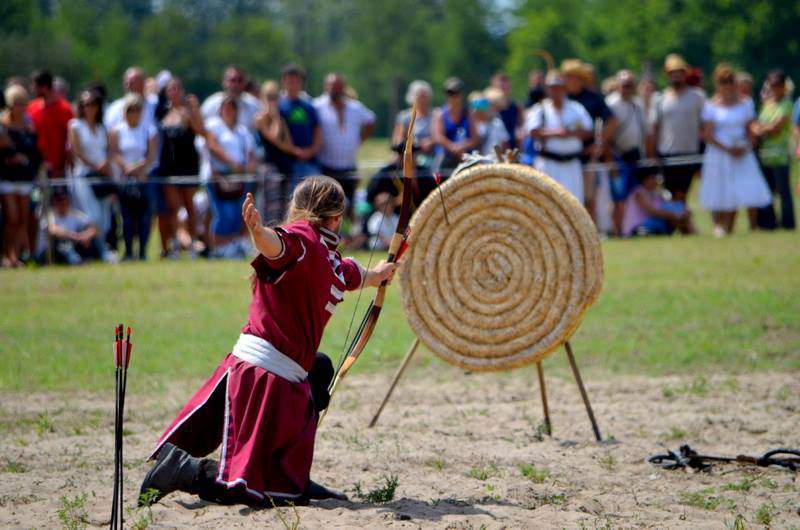Baranta – the Hungarian martial art
In the 9th century, a new school of martial arts was formed by the nomadic tribes of Magyars. This new way was based on both hand-to-hand and armed combat. It is Baranta, one of the most complex fighting schools in Europe.
Though Baranta is mostly connected to Hungary, it borrows a bunch of elements from the fighting culture of other nations which wandering Magyars encountered along their journey like Scythians, Huns, Avars, Turks, Onogurs and Kazakhs. The word ‘Baranta’ means competition, challenge, preparation for combat or lawful violence, according to Baranta.gportal.hu.
The knowledge of Baranta is divided into two main branches: thug (infantry) and ráró (cavalry).
Both branches use a wide variety of weapons, some of which (e.g. fokos, saber) can only be learned to use after acquiring some skills with “prelude weapons” (e.g. sword, stick). Bows play a vital role in Baranta, but it is applied as a dynamic weapon. This means that it is never used among static circumstances but always during movement. A similar idea is taught in the case of mounted archery.

Photo: Facebook.com/Felföldi-Baranta-Szövetség
Tournaments and trainings provide opportunity to learn skills with bow, saber, sword, fokos, lance, sticks, knife, tether, shield and hatchet.
Learning horse-riding is essential for even the representatives of the infantry branch.
The golden age of Baranta was between the 7th and 17th centuries. Three main eras are differentiated in the history of this martial art: the nomad era, the Árpád era and the border guard era.
The decline of Baranta is mostly connected to regulations and prohibitions of martial arts and fighting schools, mostly introduced by the Habsburgs. A part of the movements survived only in dances, traditions, books and artistic depictions.
There were multiple attempts to revive Baranta.
Military officers in both world wars used the old methods to enhance both the army’s combat skills and national identity.
Much effort was put into gathering a unified knowledge about Baranta and spreading it in the ‘60s, but they could not compete with the increasing popularity of Asian martial arts. In the 1980’s, several workshops were formed to research the ancient Hungarian fighting culture. According to Baranta.org, Ferenc Vukics managed to conclude the first collection in 1991, who was inspired by his experience in the fighting schools of shepherds from his childhood.

Photo: Facebook.com/Felföldi-Baranta-Szövetség
The basics of the infantry branch were recorded in Kossuth Lajos Military College between 1993 and 1997. A similar base of knowledge was conluded by Zsolt Kelemen concerning the cavalry branch. The two researchers met in Szentendre and they were put in practice.
Just as Karate has the belts in different colors, practitioners of Baranta receive animal names due to their rank: these are Borsuk (badger), Burk (wolf), Bars (panther) and Kaplony (tiger). Baranta is a complex way of fighting: it focuses on both ranged and melee combat, as well as hand-to-hand fights.
In order to receive the rank of instructor (Bars-oktur), one has to prove themselves in 34 different categories.
Today, there are 73 schools with approximately 2500 practitioners in total who are learning the old Hungarian way of fighting.
Photo: Facebook.com/Mecseki-Sólymok-Baranta-Pécs
Source: Baranta.org, Baranta.gportal.hu
please make a donation here
Hot news
What happened today in Hungary – 26 July, 2024
Drama: number of births in a 20-year low in Hungary
Yay or nay? – 6 odd Hungarian delicacies that make our skin crawl
Budapest tourism “exploded” this past weekend
Container transport in Budapest may stop: How will this affect Hungarian economy?
Minister: Hungary will protect its territory by every means possible




